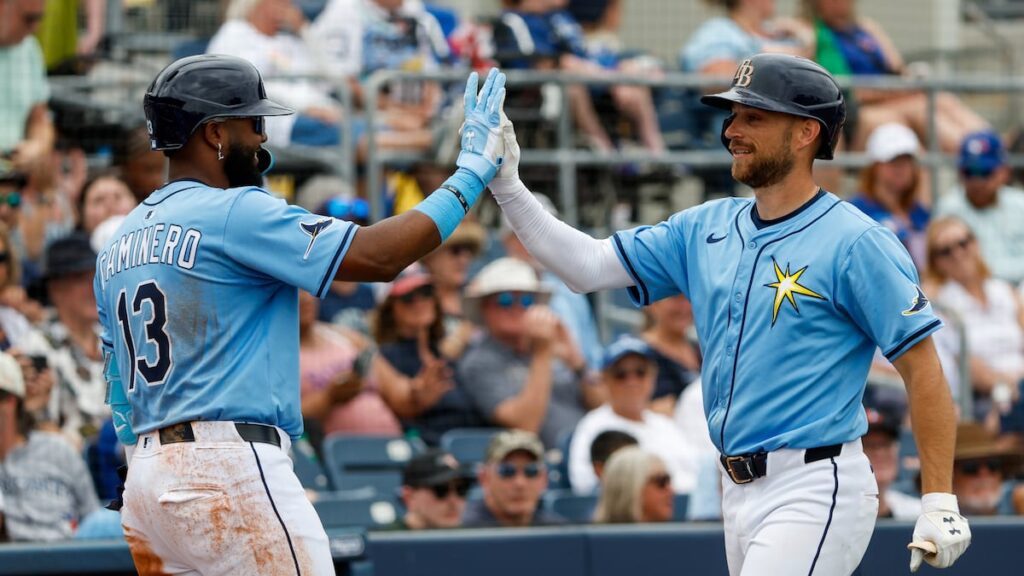The Tampa Bay Rays Roster Strategy: A Closer Look
CLEARWATER — They never spoke the uncomfortable part out loud.
Whenever asked about having six starting pitchers for a five-man rotation, Rays officials would simply say things would work themselves out. Maybe they would use a modified six-man rotation early in the season or, more likely, they would have two pitchers throw four innings each on the same day.
In reality, everyone knew an injury was a possibility. Given past history around the game, maybe even a probability.
The Depth of the Rays Roster
So, the Rays resisted the urge to explore a trade and, instead, had all six starters lined up to begin the season in the rotation.
Ace Shane McClanahan will begin the season on the injured list — an obvious blow — but Tampa Bay is not scrambling for Triple-A replacements or spot starters or a last-minute trade.
“We spent a lot of time talking about (the rotation) in the offseason, we spent a lot of time heading into spring training, all throughout spring training and then, three days left, it worked itself out because we have the depth,” manager Kevin Cash said. “It certainly didn’t work itself out (from the standpoint) that we’re going to be short a really good pitcher for whatever time that is.”
Competing with Creativity
For a franchise with less revenues and a lower payroll, it’s one of the ways the Rays can compete against wealthier opponents. The easiest path to offseason huzzahs is to sign a big-name player for mega-bucks. The tougher method is constructing a seamless roster with every eventuality in mind.
The Rays are not comparable to a team like the Yankees if you’re talking about the 10 best players on the roster. But when you look at roster spots Nos. 11-26, or even Nos. 11-40 when you take into account Triple-A players, the Rays can close the gap on bigger spenders.
Reflecting on Roster Strategy
“Rosters are 26 spots deep. It’s not like the NBA where you can have a star or two and that can take you to the postseason,” baseball operations president Erik Neander said hours before McClanahan’s injury on Saturday. “You cannot give up too much ground on the backside of the roster. You’ve got to keep that floor up in a good position.
“I mean, having stars is really important, but protecting that floor and having the next options up be as qualified as possible to fill in when there’s health issues is a big part of it.”
Find Balance in Roster Construction
Here’s another way of looking at it:
There are 126 players with salaries above $13 million this season, according to Spotrac. That should work out to an average of four high-priced stars per team.
Not a single one of those players is in Tampa Bay.
Instead, the Rays incorporate a whole bunch of different ideas to compensate. They collect younger players who do not yet have the service time to command huge salaries. They find players who struggled elsewhere or were coming off injury but still have potential. They have players with specific skills that can be utilized in specific roles. And they reward a handful of their own stars with salaries that are hefty but not payroll-crushing if something goes awry.
Adaptability is Key
Mostly, they make sure they have options if a player does not perform to expectations, for whatever reason. The last player on their 40-man roster is certainly not as talented as Junior Caminero or Ryan Pepiot, but the gap is not as large as some other teams with a handful of mega-stars.
“We can all anticipate and think we have an understanding of how a player is going to perform, but that doesn’t always happen,” said Cash. “You’ve got to have a lot of people, a lot of parts, that can help you cover down starts, poor months, injuries, whatever it is.
“You cannot expect all 26 of your guys are going to play to their potential. That just doesn’t happen.”
Conclusion
The Tampa Bay Rays have adopted a unique approach to roster construction, focusing on depth and adaptability rather than relying on high-priced stars. By utilizing platoon candidates and developing young talent, the Rays have found success in competing against wealthier opponents.
FAQs
How have the Rays managed to compete with lower revenues compared to other teams?
The Rays prioritize roster depth and flexibility, collecting younger players and utilizing platoon strategies to maximize performance.
Why are the Rays’ roster strategies different from other teams?
The Rays focus on building a well-rounded roster with options for every scenario, ensuring they can cover for injuries or underperformances without relying on a few high-priced stars.


